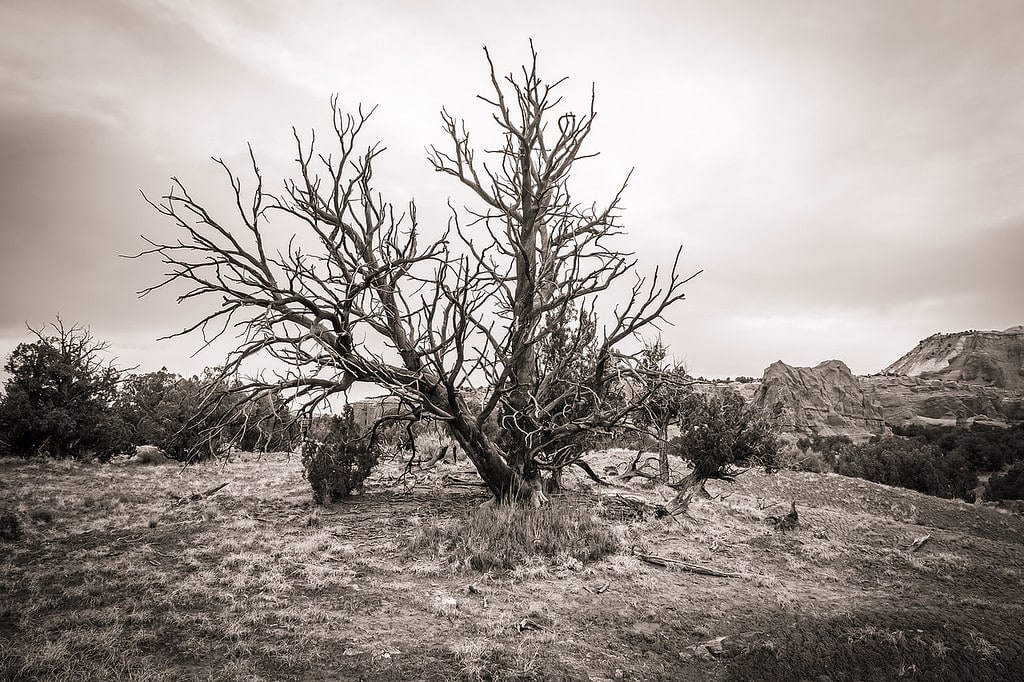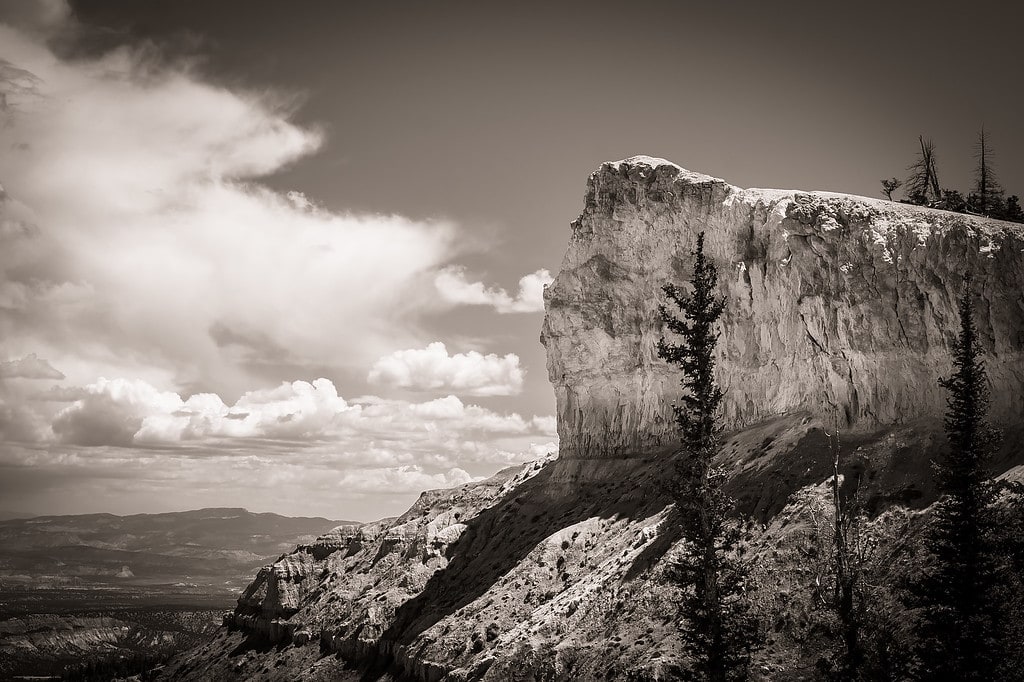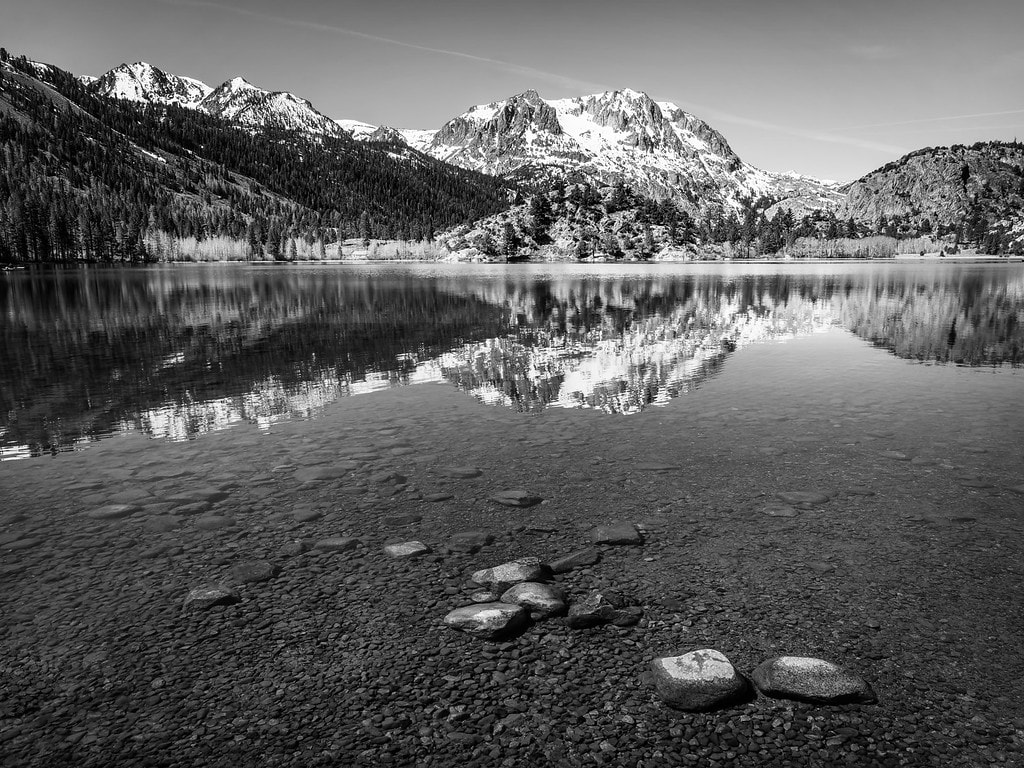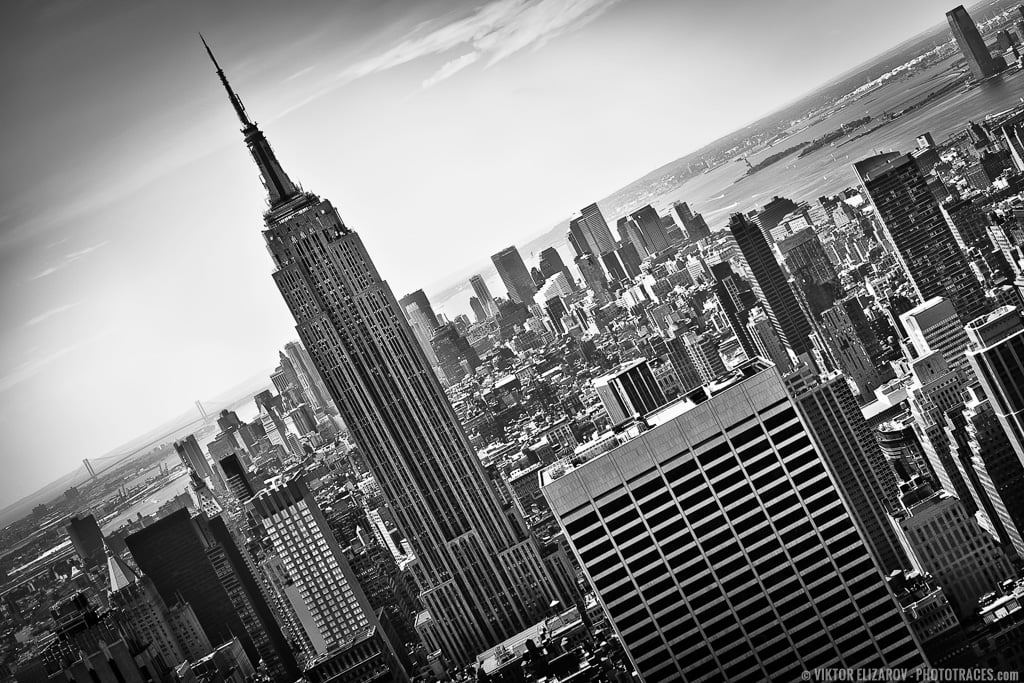[ad_1]
If you’re beginning to take black and white pictures or are simply it as the following step in your images, you’ve in all probability come throughout three phrases (grayscale vs black and white vs monochrome) and questioned, “What’s the distinction?”
The fast reply is, “Not very a lot.” Nonetheless, to actually perceive these distinctions and the way they affect your photographic journey, it’s important to take a more in-depth take a look at every time period and discover their delicate divergences.
Black and White Pictures
As soon as upon a time, there was simply “movie.” It was all black and white; that was the one choice. Google “previous movie field,” and also you’ll see it’s going to merely say “movie” on the field with none point out of coloration or black and white.
As coloration images turned extra well-liked, there needed to be a solution to inform what sort of movie you have been shopping for. The phrase that was coined was, in fact, a “Black and White” movie.
However, that is removed from being very correct.
If you concentrate on it, a real black and white picture would encompass solely black and white colours. However, what we name a black and white {photograph} is made from black, white, and many various shades of gray.


What’s Grayscale Pictures?
“Grayscale” is a extra technical and extra correct time period for the kind of images we name black and white. The technical definition of “grayscale” pictures that composed solely of various shades of grey, starting from pure black to pure white, with no coloration info.
You’ll discover photographers use the time period “Black and White” whereas these within the design business favor the time period “Grayscale.”
Utilization of the time period “grayscale” has elevated since using digital imaging has taken over movie images.
What’s Monochrome Pictures?
The time period “monochrome” has its origins within the medieval Latin phrase monochrōma. It consists of two phrases: “mono” and “chrōma,” which interprets precisely as “single coloration.”
Monochrome images might be outlined as a picture consisting solely of assorted shades inside a single coloration, starting from the brightest to the darkest hues.
The very best instance of a monochrome picture is a sepia picture, which has its origins in movie images. It emphasizes the interaction of sunshine and shadow, texture, kind, and distinction whereas eliminating the complexity of a full spectrum of colours.


Grayscale vs Black and White
In essence, “grayscale” and “black and white” when it comes to images imply precisely the identical factor. Nonetheless, grayscale is a much more correct time period. A really black and white picture would merely encompass two colours—black and white. Grayscale pictures are created from black, white, and your complete scale of shades of grey.
Grayscale vs Monochrome
All grayscale or black and white pictures are monochrome as they’re made from various shades of just one coloration—black. Nonetheless, not all monochrome pictures are grayscale, as monochromatic pictures might be made from any coloration.
A picture made solely of shades of yellow would nonetheless be thought of a monochromatic picture.


What’s the Greatest Strategy to Create Grayscale, Black and White, or Monochromatic Images?
In fashionable digital images, there are two principal methods of manufacturing grayscale or monochromatic photographs.
01. Creating Black and White Photos In-camera
You’ve in all probability spent a while your digital camera’s instruction guide and relying on the digital camera model you personal, you’ve in all probability observed that it has Black and White, Monochrome, or Movie Simulation modes. By activating a kind of modes, you instruct your digital camera to provide black and white or monochrome pictures on the time of the taking pictures.
The way in which the digital camera works is first by capturing the picture in coloration. Subsequent, it runs the picture by means of the digital camera’s inside processor and converts them to black and white. Lastly, it saves the captured picture as a JPEG picture.
The benefit of this black and white images strategy is that you just immediately have a black and white picture, and no additional conversions are crucial.
The drawback of in-camera black and white taking pictures is that through the conversion, the digital camera discards all the colour info and turns the uncompressed RAW file right into a closely compressed JPEG format. If you’re sad with the ultimate picture, you can not change it again to a coloration model. Plus, the latitude at which you’ll be able to edit the JPEG picture may be very restricted.


02. Creating Black and White Photos in Put up-Processing
The second strategy to black and white images is to shoot in coloration in an uncompressed RAW format and convert the colour picture to black and white in a photograph modifying software similar to Lightroom or Photoshop.
The benefit of this technique is that it preserves all of the doable information that the digital camera sensor collects from the scene, which provides you extra freedom through the modifying course of. You may produce coloration and black and white variations of the identical picture and create an infinite variety of black and white and monochrome variations.
The drawback is that it requires the additional step to create the black and white picture, and you have to be taught picture modifying.
Associated: Pictures Abbreviations and Acronyms
Personally, I all the time shoot in coloration in RAW format and later determine what remedy I wish to apply to my photographs. I closely depend on Lightroom presets to hurry up the black and white conversion. I’ve a devoted assortment for panorama images and presets designed for environmental portraits.
The Hybrid Methodology of Capturing for Black and White
As I discussed earlier, there are two major strategies of making black and white images. I typically use a mixture of each approaches for the reason that advances within the digital camera’s mirrorless expertise has made this hybrid strategy doable.


My major digital camera is a mirrorless Fujifilm X-T2, and I all the time shoot in coloration in RAW format. However, I’ve the choice to use black and white movie simulations to my pictures anyway. What this does is switches my EVF to monochrome mode, so I can preview the scene in black and white to raised assess the scene’s potential for black and white images.
See additionally: How Massive Is a 4×6 Photograph?
After I press the shutter, the digital camera captures the colour RAW picture however concurrently creates a black and white preview and embeds it into the RAW file.
With this strategy, I’ve the most effective of each worlds.


Grayscale vs Black and White vs Monochrome: FAQ
Monochrome vs. Grayscale Printing: What’s the Distinction?
Grayscale printing combines coloration ink or toner with black to provide assorted grey tones, enhancing picture high quality. In distinction, monochrome printing makes use of simply black ink or toner, excellent for clear textual content printing.
Associated: Printing Pictures – Matte vs Shiny
The choice to go for monochrome or grayscale printing hinges in your particular printing necessities. In case your major output consists of black and white textual content, the monochrome setting or a monochrome printer is essentially the most appropriate selection. Then again, when working with black-and-white pictures, grayscale printing is the popular choice on account of its functionality to provide a spectrum of contrasting shades and finer particulars.
When purchasing for printers, do not forget that coloration printers can deal with each modes (grayscale and monochrome), however monochrome printers are restricted to monochrome mode.
Black and White vs. Grayscale Scanning: What’s the Distinction?
The principle distinction between Black and White (monochrome) and Grayscale scanning modes lies in the way in which they deal with coloration and the kind of content material they’re finest suited to.
Black and White (monochrome) scanning makes use of solely two colours – black (ink or toner) and white (no ink or toner). Printed characters seem as black on a white background, making them extremely legible. Monochrome scanning is often quicker and makes use of much less toner or ink. It’s an environment friendly selection for paperwork primarily consisting of textual content.
Grayscale scanning captures a variety of grey shades, from black to white. It permits for the copy of extra nuanced pictures and paperwork with coloration parts however it could take longer on account of its detailed strategy and the seize of a wider vary of tones.
Associated: Commonplace Print Sizes
Grayscale scanning is good for reproducing pictures or paperwork that comprise extra than simply black textual content. It offers a photographic illustration that features delicate coloration variations and imperfections.
Grayscale vs Black and White vs Monochrome | Conclusion
There are some photographers who ONLY create black and white pictures within the digital camera and see it because the purest type of images. I can definitely recognize this perspective.
However, in case you are initially of your images journey and simply working by means of the assorted phrases, meanings, whys, and wherefores, my recommendation is to not panic. Exit and {photograph} as a lot and as typically as you’ll be able to. Later, you’ll be able to determine if it needs to be a coloration or a black and white picture.
The query is… what do you suppose? Which technique of making black and white and monochrome pictures do you favor? Do you solely use in-camera conversions or do you favor a post-processing workflow?
Tell us your ideas within the feedback beneath!
Articles Associated to “Grayscale vs Black and White vs Monochrome: the Distinction Defined“
[ad_2]